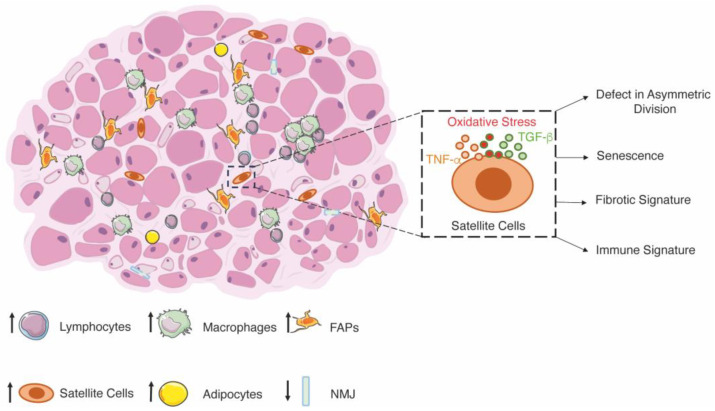Figure 2.
Schematic representation of muscular dystrophy. Dystrophic muscles are characterized by cycles of degeneration and regeneration, which, over time, lead to the loss of myofibers with an accumulation of mostly fibrotic tissue. The fast fibers (light pink) are the most affected by the cycles of regeneration and regeneration, causing an abnormal morphology of the neuromuscular junctions, while slow fibers are not affected (dark pink). High infiltration of inflammatory cells (lymphocytes and macrophages) leads to an increase in the number of SCs, which, however, show a dysfunctional phenotype. The dysfunctions observed in the SCs are triggered by extracellular factors (cytokines) but also by intracellular defects (lack of dystrophin) that lead to a disruption of asymmetric division as well as senescence and changes in the myogenic signature towards a fibrotic and immunological signature.

